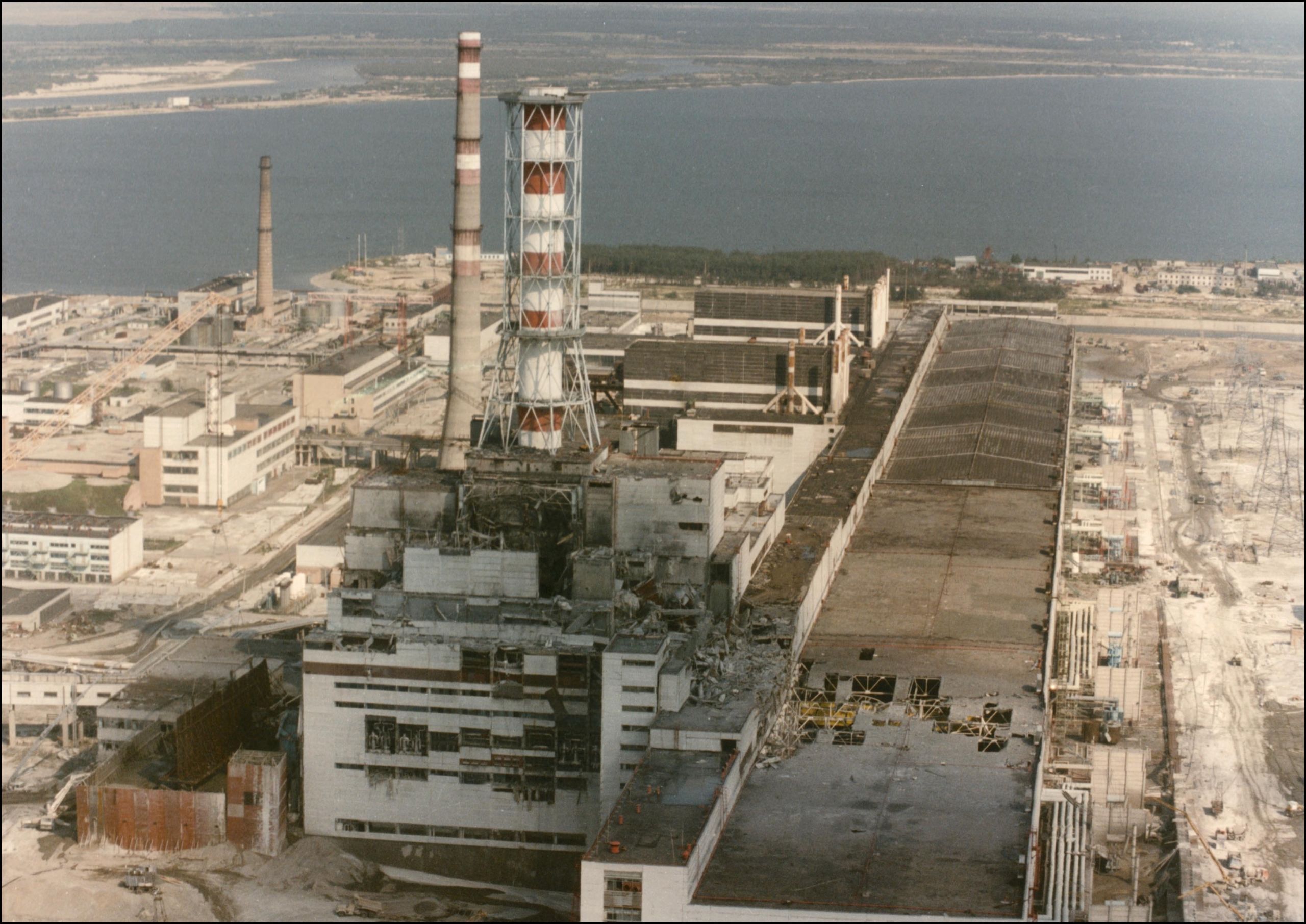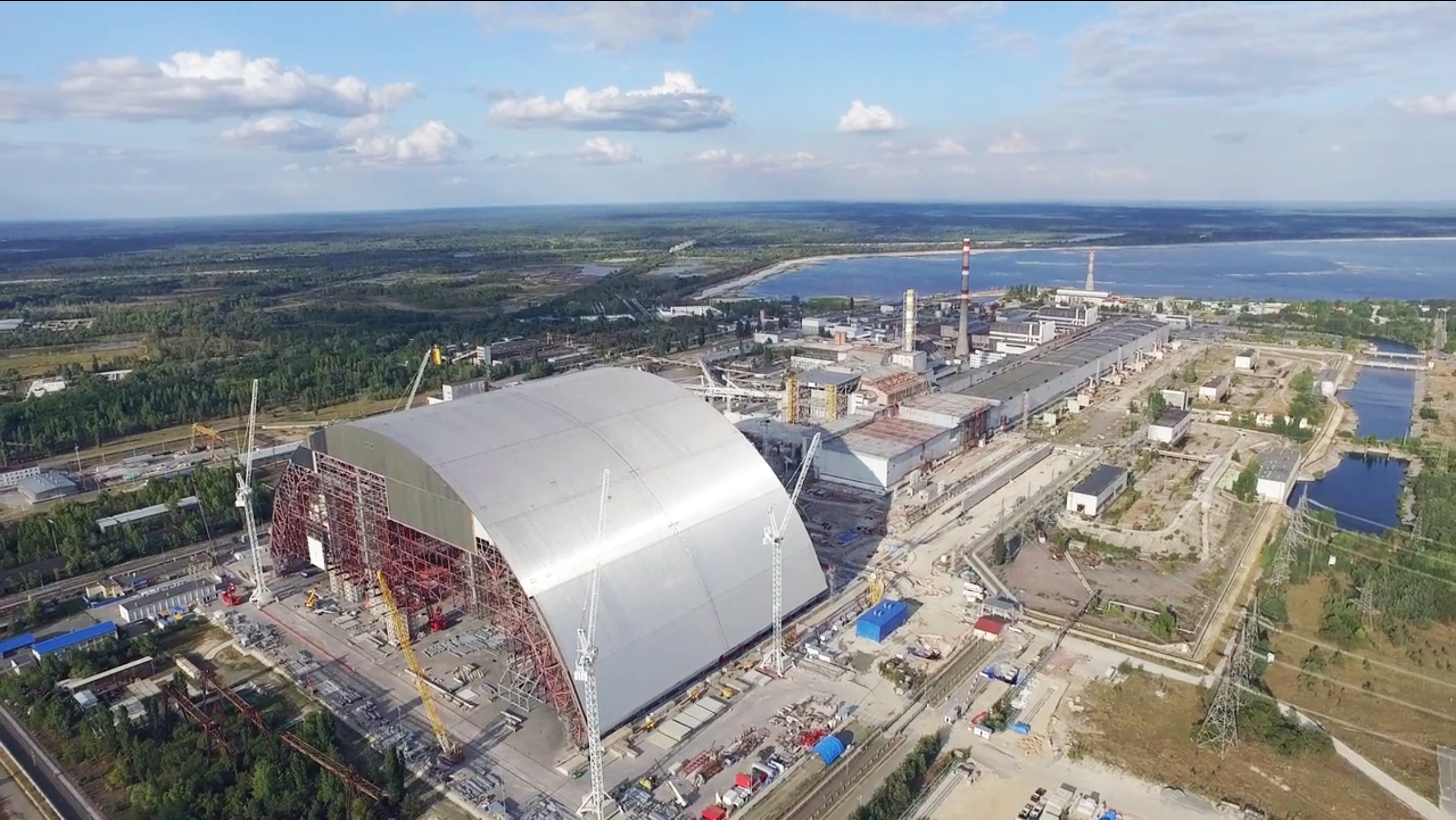Chernobyl Sarcophagus: A Symbol of Nuclear Disaster and Engineering Resilience

Chernobyl's Elephant's Foot: A stark reminder of a nuclear disaster - Source interestingengineering.com
Editor's Notes: "Chernobyl Sarcophagus: A Symbol Of Nuclear Disaster And Engineering Resilience" have published on today date . This topic is important to read because this is not only give impact on today but also in the future.
Our team did an analysis, digging information, and made the put together this Chernobyl Sarcophagus: A Symbol Of Nuclear Disaster And Engineering Resilience guide to help you make the right decision.
Key Differences
| Feature | Chernobyl Sarcophagus |
|---|---|
| Purpose | To contain the radioactive materials released by the Chernobyl nuclear disaster |
| Construction | Built from concrete and steel, with a reinforced concrete roof |
| Dimensions | Length: 150 meters (492 feet), width: 90 meters (295 feet), height: 55 meters (180 feet) |
| Timeline | Construction began in June 1986 and was completed in November 1986 |
Transition to main article topics
FAQ
Frequently asked questions and expert answers regarding the Chernobyl Sarcophagus, a grim reminder of the nuclear disaster and a testament to engineering resilience.

Chernobyl Disaster: Deaths, Environmental Damage Continue | TIME - Source time.com
Question 1: What was the purpose of the Chernobyl Sarcophagus?
Answer: Constructed in the aftermath of the catastrophic nuclear accident in 1986, the Chernobyl Sarcophagus was primarily designed to prevent the release of radioactive materials from the damaged reactor complex, mitigating the further spread of contamination.
Question 2: How was the Sarcophagus constructed, and what materials were used?
Answer: The Sarcophagus was built using a combination of steel, lead, and concrete. The steel frame provided structural support, while the lead and concrete acted as shielding against radiation. The hasty construction took only 206 days, considering the urgency of the situation.
Question 3: What are the key features of the Sarcophagus?
Answer: The Chernobyl Sarcophagus is a massive structure, measuring 150 meters long, 136 meters wide, and 50 meters tall. It encloses the destroyed reactor building and houses specialized equipment used for monitoring and cleanup efforts.
Question 4: How effective has the Sarcophagus been in containing radioactive materials?
Answer: The Sarcophagus has played a crucial role in reducing the release of radioactive particles into the environment. However, due to its hasty construction and exposure to harsh conditions, the Sarcophagus has been deteriorating over time, necessitating the construction of a New Safe Confinement, completed in 2017, to provide a more permanent solution.
Question 5: What is the future of the Chernobyl site and Sarcophagus?
Answer: The Chernobyl site remains a highly contaminated area. Decommissioning and cleanup efforts are ongoing, and the Sarcophagus will continue to be maintained and monitored, ensuring that the radioactive materials within remain safely contained.
Question 6: What lessons have been learned from the Chernobyl accident and the construction of the Sarcophagus?
Answer: The Chernobyl disaster highlighted the importance of nuclear safety, the need for robust containment structures, and the complexities of managing the aftermath of nuclear accidents. These lessons have shaped international nuclear regulations and have informed safety measures at nuclear facilities worldwide.
The Chernobyl Sarcophagus serves as a sobering reminder of the devastating consequences of nuclear accidents and the ingenuity of engineers in mitigating their impact. It underscores the ongoing challenges and responsibilities associated with nuclear power and the need for continued vigilance and innovation in the field.
Proceed to the next article section for further insights into the Chernobyl disaster and its aftermath.
Tips
The Chernobyl Sarcophagus, a massive steel and concrete structure built after the 1986 nuclear disaster, stands as a testament to the resilience of engineering in the face of human error. The tips below provide insights from the construction and maintenance of this iconic structure, offering valuable lessons for infrastructure projects worldwide.
Tip 1: Prioritize Safety First
The Chernobyl disaster highlighted the critical importance of prioritizing safety in all aspects of infrastructure design and construction. Incorporating multiple layers of safety measures, such as multiple containment barriers and redundant systems, can help mitigate potential risks and prevent catastrophic failures.
Tip 2: Collaborate and Innovate
The construction of the Chernobyl Sarcophagus required the collaboration of engineers, scientists, and workers from multiple countries. Fostering a spirit of innovation and collaboration can lead to the development of creative solutions that address complex engineering challenges.
Tip 3: Address Long-Term Maintenance
The Chernobyl Sarcophagus has undergone extensive maintenance and repairs over the years. Planning for long-term maintenance and sustainability is crucial to ensure the ongoing safety and integrity of critical infrastructure. Investing in regular inspections, monitoring, and preventative maintenance can extend the lifespan of structures and reduce the risk of accidents.
Tip 4: Leverage Advancements in Technology
The Sarcophagus has been upgraded with advanced monitoring and control systems. Embracing technological advancements in infrastructure can enhance safety, efficiency, and predictive maintenance capabilities. Smart sensors, data analytics, and automated systems can provide valuable insights into the condition of structures, enabling proactive decision-making.
Tip 5: Engage in Continuous Learning
The Chernobyl disaster and the subsequent construction of the Sarcophagus serve as a constant reminder of the importance of continuous learning in engineering. Regularly evaluating and updating safety protocols, design standards, and construction techniques can help prevent similar tragedies from occurring in the future.
By applying these tips, engineers and policymakers can enhance the safety, resilience, and sustainability of critical infrastructure projects. The Chernobyl Sarcophagus, while a symbol of a tragic event, also represents the indomitable spirit of human engineering and the ongoing pursuit of safety and innovation. Chernobyl Sarcophagus: A Symbol Of Nuclear Disaster And Engineering Resilience
Chernobyl Sarcophagus: A Symbol Of Nuclear Disaster And Engineering Resilience
The Chernobyl Sarcophagus, erected after the catastrophic 1986 nuclear disaster, stands as a testament to both the devastating consequences of nuclear accidents and the remarkable resilience of human ingenuity. Six key aspects encapsulate the intricate narrative surrounding this iconic structure.
- Nuclear Legacy: A haunting reminder of the potential dangers of nuclear power.
- Engineering Triumph: An extraordinary feat of engineering that averted a further catastrophe.
- Radiation Containment: A crucial barrier preventing the spread of radioactive contaminants.
- Scientific Symbol: A focal point for ongoing research into nuclear safety and containment.
- Historical Landmark: A site of global significance, attracting visitors and researchers alike.
- Engineering Resilience: A demonstration of human capability to mitigate the consequences of major disasters.

Chernobyl - 35 Years On - Source www.bbc.com
These aspects intertwine to create a complex and poignant narrative. The Chernobyl Sarcophagus is a reminder of the perilous consequences of nuclear accidents, yet it also showcases the extraordinary resilience and adaptability of human ingenuity in the face of adversity. As a historical landmark and scientific symbol, it serves as a constant reminder of the importance of nuclear safety and the potential for engineering to address even the most daunting challenges.

Chernobyl 'Sarcophagus' That Holds in Radiation From the World's Worst - Source www.newsweek.com
Chernobyl Sarcophagus: A Symbol Of Nuclear Disaster And Engineering Resilience
The Chernobyl Sarcophagus, a hastily constructed concrete structure, stands as a jarring reminder of the devastating nuclear disaster of 1986. It was built in the aftermath of the explosion, encasing the damaged reactor and preventing the release of further radioactive material into the atmosphere. Its construction was a testament to the ingenuity and resilience of engineers working under extreme circumstances, and it has since become an iconic symbol of both the disaster and the human response to it.

Confinement shelter for the Chernobyl sarcophagus | Bouygues Construction - Source www.bouygues-construction.com
The sarcophagus was not without its flaws. Its construction was rushed, and it was built using materials that were not designed to withstand the harsh conditions inside the reactor. Over time, it has deteriorated, and cracks have appeared in its structure. As a result, there are ongoing concerns about the structural integrity of the sarcophagus and the potential for radioactive leaks.
Despite its flaws, the Chernobyl Sarcophagus has played a vital role in mitigating the consequences of the nuclear disaster. It has prevented the release of large amounts of radioactive material into the atmosphere, and it has allowed for the safe removal of spent nuclear fuel from the reactor. The sarcophagus is also a reminder of the dangers of nuclear power and the need for continued vigilance in the operation of nuclear power plants.
The Chernobyl Sarcophagus is a complex and controversial structure. It is a symbol of both the devastation caused by the nuclear disaster and the resilience of the human spirit. It is a reminder of the importance of nuclear safety and the need for continued efforts to mitigate the consequences of nuclear accidents.
| Year | Event |
|---|---|
| 1986 | Chernobyl nuclear disaster |
| 1986-1987 | Construction of the Chernobyl Sarcophagus |
| 2016 | Completion of the New Safe Confinement |
Conclusion
The Chernobyl disaster was a tragedy that had a profound impact on Ukraine and the world. The Chernobyl Sarcophagus was a necessary response to the disaster, and it has played a vital role in mitigating its consequences. However, the sarcophagus is not a permanent solution, and it is important to continue to monitor its condition and to develop plans for its eventual replacement.
The Chernobyl disaster also serves as a reminder of the importance of nuclear safety. Nuclear power is a powerful and efficient source of energy, but it also comes with risks. It is important to ensure that nuclear power plants are operated safely and that there are adequate plans in place to respond to nuclear accidents.